From internal pipelines, drains are transported by external ...

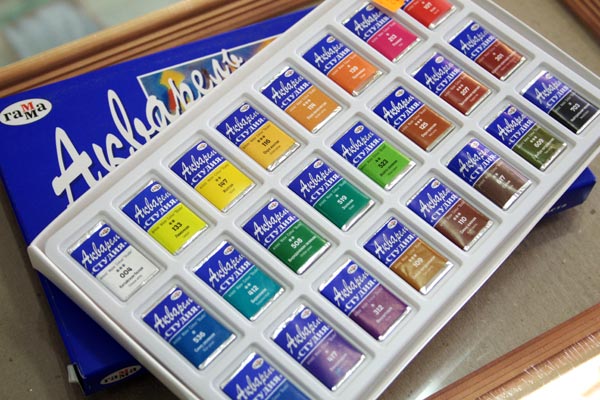
The question of drying paint worries any master, because the completion date of an object depends on it. Indeed, how much does it dry? And if this is not an object, but a house in which you decide to paint the floor or pipes ... What to do in this case, if you have no idea how long it will take to dry the same acrylic paint? After all, repairs can stretch out indefinitely because of this.
The approximate age of the appearance of acrylic paints is half a century. During this time, they confidently pressed other types of paintwork until they took a leading position. Now they are used everywhere - they paint facades, walls, ceilings, cars ... There are many advantages due to which the material has gained such popularity:
The answer to the question, how much does it dry acrylic paintdepends on the basis for which it is intended.

Acrylic-based paint can be used on any type of substrate - wood, brick, concrete, metal, plastered. With the help of an airbrush, you can draw on any wall and even asphalt. The possibilities are limited only by your imagination.
On each of the materials, it behaves differently. It depends on how much time it needs for the surface to become completely resistant to the external environment. Nevertheless, it dries quickly enough on any basis, which makes it very convenient to use.
For painting concrete, water-based acrylic paint is used. After evaporation of water, a strong film forms on the surface, which has the ability to pass steam, while perfectly protecting from water.
The surface of concrete under such a layer is perfectly protected from undesirable atmospheric phenomena and does not collapse. How much paint is needed to carry out work on a certain area can be calculated in accordance with the instructions on the package. Acrylic dries quickly, so after two days you can safely walk on such a coating.
For brick, the same acrylic paint is usually used as for concrete. Its advantage over other, cheaper formulations is the complete absence of water absorption. The composition usually includes silicone, due to which water rolls off the painted surface without lingering on it.
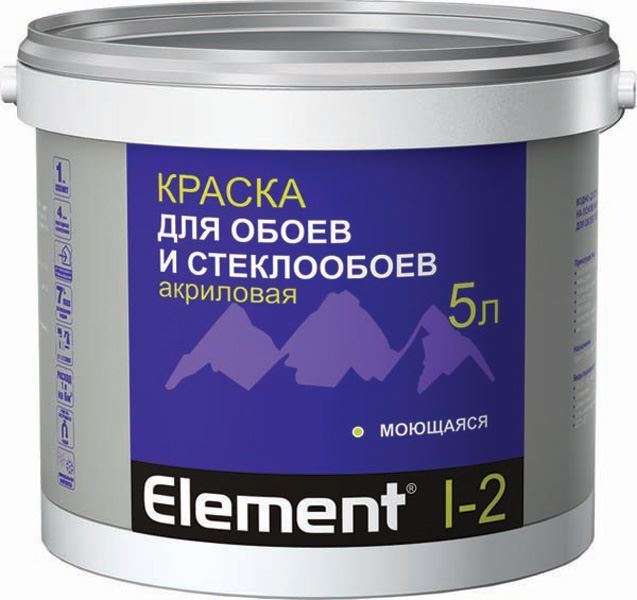
Why do we choose acrylic for wood? Factors such as:
Acrylic based paint dries quickly enough. How many? Depends on the number of layers applied. The first layer will gain strength quickly (within 3 to 4 days), the second a little longer (4 to 7 days). Usually staining with two layers can be limited. But no one bothers to get a surface of even better quality. The third layer will dry even longer.
Acrylic is best applied to metal with a spray gun, although it is not forbidden with a brush. Pre-clean the surface of dirt, dust and, very importantly, possible grease stains. If there are small pockets of rust, paint directly on them. Acrylic paint will block access to water and the destruction process will not go further.
A thin layer of spray gun dries immediately. If you work with a brush or roller, the drying process can take up to a day.
Well, hopefully now you know exactly how much acrylic dries. Choosing acrylic for interior decoration, prefer water-free, odorless material.
Do not forget to close the container with paint tightly, having previously carefully released the lid and edges from it.
Acrylic is stored for a long time, but due to the tightly adhered lid, you just have to discard the paint.
Such a statement of the question is not too correct. To find the answer, you must first find out what the material is, what conditions are required for its speedy hardening. Comprehensive information will be provided below, which will help to find out how much acrylic paint dries.
A hardener is present in the composition of acrylic paint, which activates a specific chemical when applying a layer of material on the surface. The main catalyst for starting the reaction is the ambient temperature. The higher it is, the less time it takes to harden the paint.
When using acrylic paint to perform both external and internal works, in natural conditions it is possible to achieve heating of surfaces up to a maximum of 25 ° C. Such indicators absolutely do not contribute to the instant drying of the material. The best conditions for the quickest drying of acrylic paint are created only when processing surfaces in specialized
How much dries depends not only on temperature. Among other factors, it is worth noting the quality of ventilation of the room in which work is carried out. Also, the thickness of the applied layer affects the curing rate of the material. If the layer of substance is as thin as possible and covers a perfectly even surface, drying can take about half an hour. However, a thick or repeated coat of paint will harden much longer.
If necessary, drying time acrylic material can be reduced by adding latex to the composition. The specified substance significantly improves the already excellent water-repellent qualities of the paint of the type presented. When exposed to a mixture of warm air to completely harden a thin layer, it can take only a few minutes, while in the case of applying acrylic paint at room temperature, the drying time of the surface will be up to two hours. However, the final hardening of the formation will occur in about 24 hours.

Today, a wide variety of acrylics are on the market. Each type of material has differences in solidification speed. Therefore, in order to find out how much acrylic paint dries, before buying it, you should carefully read the information on the manufacturer’s label and compare the presented indicators with the conditions in which the work will be carried out.
What is the consumption of acrylic paint per m2? On average, about 200-250 grams of a substance is required per unit area. To make the material consumption as economical as possible, you need to use a high-quality roller for painting walls. The texture that will appear on surfaces will also depend on the selection of the tool. In particular, for processing smooth wallpapers, it is better to choose a roller for painting walls with an average pile length. To make the material costs minimal while processing the textured plane, it is recommended to use a tool with a long pile, which will achieve uniform distribution of the substance.
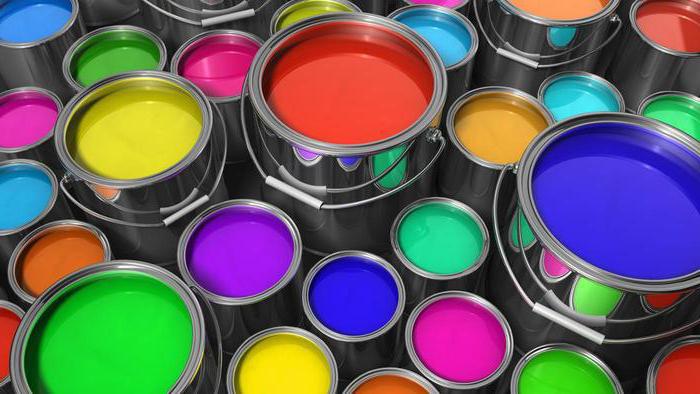
In general, trying to determine the consumption of acrylic paint, do not blindly trust the indicators indicated on the label. The latter are valid only in the case of processing perfectly smooth surfaces. For example, if the manufacturer indicates a material consumption of 8 m 2 per liter, in reality, banks will only have enough space for 6-7 m 2. Based on this, it is recommended to purchase acrylic paint with a certain margin, about 5% more than what is required according to preliminary calculations. If the material is used for priming surfaces, its volume can be slightly increased by adding a small amount of water to the composition.
Acrylic paints have excellent characteristics. They belong to the category of quick-drying materials. At the same time, they can be applied both on concrete surfaces, and on metal and plaster.
Acrylic materials are characterized by low gas permeability and effective water repellent. On this basis, they serve as reliable protection for surfaces from the development of corrosion processes.
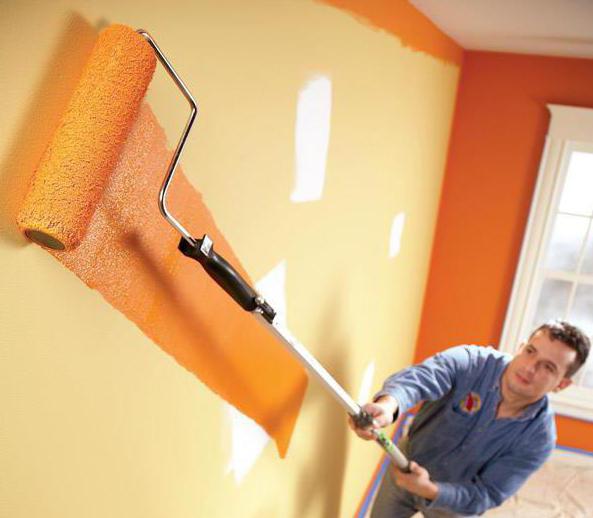
Paints of a presented nature are distinguished by a huge range of bright, saturated shades that do not change their original appearance under the influence of sunlight.
Due to its increased resistance to adverse environmental factors, acrylic paints are equally effective for indoor and outdoor use. They have frost resistance, do not light up at a critical increase in temperature. In general, you can use acrylic paints for processing any surfaces, from interiors to the artist’s canvas.
Acrylic paint contains three components: pigment, binder and water. As a binder, copolymers or acrylates are used. The paint dries very quickly and after drying forms an elastic plastic resistant coating, has good hiding properties and excellent color brightness. Acrylic paints, unlike watercolors, do not fade in the sun and do not fade over time, like oil.
In the process of water evaporation, the acrylic paint dries, after which it forms an elastic film of pigment and a binder. The dried acrylic is very durable, it is not brittle and does not form cracks, the painted surface does not flake. After time, acrylic does not wrinkle, it is resistant to changes in humidity conditions and temperature extremes. Its light fastness is checked by more than fifty years of existence. 
When applied with a thin layer, the paint dries almost instantly, thicker layers dry more slowly - up to several minutes. After they have dried, acrylic paints are not removed by water and do not lend themselves very well to scraping or sanding.
Great are its operational characteristics. Paint can be applied on metal and concrete surfaces, on plaster. Acrylic paints are characterized by low gas permeability, and it is for this reason that they reliably protect the painted surface from corrosion.
But it is for the same reason that they can be applied to the plastered surface no earlier than a month after the end of the work - the plaster needs carbon dioxide to harden. 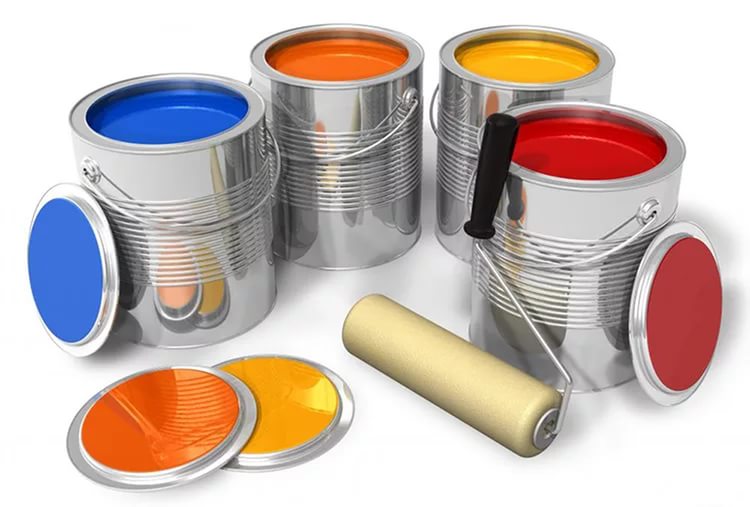
Acrylic paints give a huge range of saturated and bright colors that do not fade in the sun and do not fade over time. These paints have good vapor permeability, as a result of which the surface painted with it can “breathe” without letting moisture pass.
Due to its resistance to weathering, acrylic paint is equally well suited for both indoor and outdoor use. It is fireproof, frost-resistant and not prone to the accumulation of dirt. It can be painted with almost any surface: from cardboard and canvas in the artist’s workshop to brick and concrete at the construction site.
When applying these paints in the construction sector, latex is often added to their composition - a substance that enhances the already good water-repellent properties of the paint. The surface painted with such a composition is able to withstand up to five thousand washing cycles.
The drying time of acrylic paint depends on the environment. At high temperature and low humidity, the process proceeds much faster, which can be used to accelerate it. Promotes faster drying and good ventilation. 
Acrylic paints, popular in decorating, are widely used for artistic purposes. The differences between their compositions and conventional paint mixtures are the special brightness of colors and a variety of shades. They can be applied to almost any surface and are suitable for creating rich and colorful images.
The basis of all paints for drawing is water, pigment and acrylic resins. To give the composition improved performance, acrylates may include complex copolymers that alter the structure and physicochemical properties of the coating. Practical and universal gradually displace harmful and less stable non-aqueous paints.
Acrylic art paints quickly gained first patents and were widely distributed thanks to the following qualities:
It is important to know how much the acrylic paint dries. The time of complete solidification, sufficient for the formation of a durable polymer layer, is several hours. When working with paintings, new touches are often superimposed over previously painted surfaces.
You can start applying the next layer 30-60 minutes after the previous one, when partial polymerization of acrylates occurred.
Acrylic paints for artwork can be bought in stores selling paints for painting, or ordered in online catalogs of online stores. It is recommended to buy mixtures in sets, as this guarantees the compatibility of the compositions when filling out the palette.
To save on paints, they can be purchased in containers or larger sets. When buying, you should check the expiration date, which fundamentally affects the quality and durability of the picture.
There are a variety of domestic and foreign, producing high-quality art mixes. With their help, you can create classic paintings and relief images resembling the work of a sculptor. In Russia, several popular brands have spread.
It’s not easy to choose the one that suits you best, so we recommend watching a video comparison of the most popular products:
Sonnet is a versatile acrylic art paint suitable for paper, wood, and metal surfaces. Their bright colors do not fade over time and maintain the saturation of the created image.
The cost of a set of 12 different colors (total 120 ml) is 400-500 rubles. Tubes of 75 ml, sold separately, cost 120-140 rubles.
Acrylic art paint "DECOLA" is a composition for most types of surfaces. Paints are available in sets of 6, 9 and 12 colors. The total palette includes more than 20 shades.
A 50 ml jar of paint has a price in the range of 100-250 rubles, depending on the type of paint. The cheapest are glossy acrylic art paints, and metallic products are among the most expensive formulations. A set of 12 colors of ordinary paints (240 ml) costs 250-300 rubles.
This paint is often confused with another, which has the similar name "Decolor". Which is better for you to decide, but we advise you to watch the following video about such a product:
Luch is produced primarily in sets of 12 tubes of 15-20 ml each. Acrylic art paints “Ray” differ in brightness and do not lose their properties over time. The cost of the set is 250-350 rubles.
Gamma acrylic paints are relatively cheap, suitable for both amateurs and professionals. Top reviews these mixtures are obtained by creating large images.
The main form of paint release is 46 ml metal tubes. The cost of one tube varies from 90 to 190 rubles. and depends on the shade of paint and the effect attached to the drawing.
Acrylic art paint "Ladoga" is produced and sold in the form of sets of 8, 10, 12 colors. The compounds are declared by the manufacturer as universal - suitable for painting any base.
The form of release of mixtures is tubes and jars of 46 and 100 ml each. The cost of a larger capacity is 120-250 rubles. In total, 38 ordinary and 13 “metallic” shades are presented on the market.
 To dilute acrylates, you can use water, which is part of the dispersion medium. To give the resulting film special visual qualities, special solvents are used. They provide a matte or shiny surface to the hardened layer.
To dilute acrylates, you can use water, which is part of the dispersion medium. To give the resulting film special visual qualities, special solvents are used. They provide a matte or shiny surface to the hardened layer.
Acrylic paints are a good alternative to oil and watercolor compositions, differing from them in their increased durability and bright colors. The ability of acrylates to successfully interact with paints of other types increases their versatility in artistic painting. High affinity for most surfaces expands the range of use of acrylic paints and their value as a decorative material.